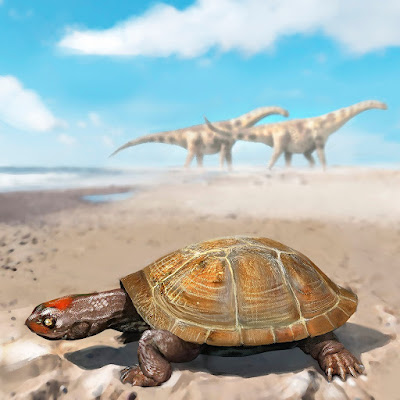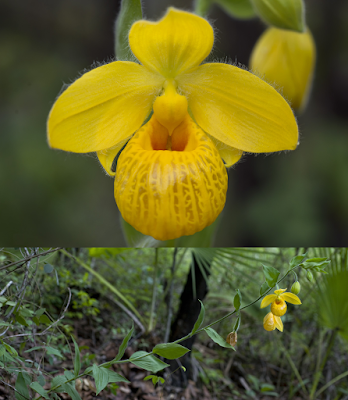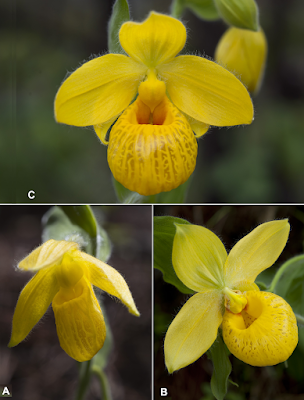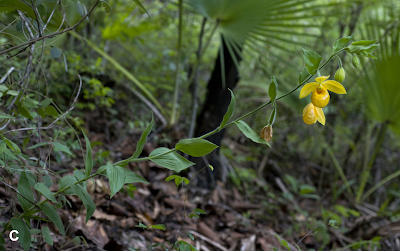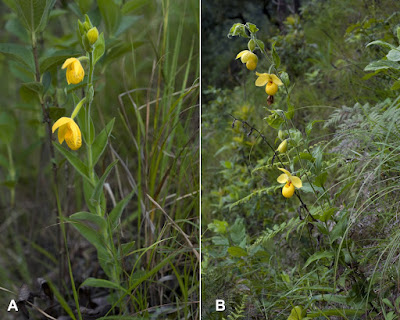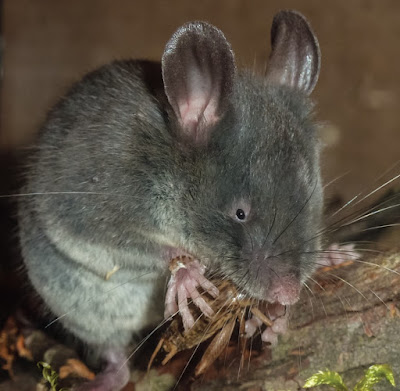[Most Recent Entries] [Calendar View]
Sunday, December 31st, 2017
| Time | Event | ||||||||
| 3:55p | [Paleontology • 2017] Algorachelus peregrinus • A New Turtle Taxon (Podocnemidoidea, Bothremydidae) reveals the Oldest Known Dispersal Event of the crown Pleurodira from Gondwana to Laurasia
Abstract Pan-Pleurodira is one of the two clades of extant turtles (i.e. Testudines). Its crown group, Pleurodira, has a Gondwanan origin being known from the Barremian. Cretaceous turtle fauna of Gondwana was composed almost exclusively of pleurodires. Extant pleurodires live in relatively warm regions, with a geographical distribution restricted to tropical regions that were part of Gondwana. Although pleurodires were originally freshwater forms, some clades have adapted to a nearshore marine lifestyle, which contributed to their dispersal. However, few lineages of Pleurodira reached Laurasian regions and no representatives have so far been described from the pre-Santonian of Laurasia, where the continental and coastal Cretaceous faunas of turtles consist of clades exclusive to this region. A new turtle, Algorachelus peregrinus gen. et sp. nov., is described here from the southern Laurasian Cenomanian site of Algora in Spain. Numerous remains, including a skull and well-preserved postcranial specimens, are attributed to this species. The abundant shell elements, much more numerous than those known in most members of pleurodiran clade Bothremydidae, allow its variability to be studied. The new taxon represents the oldest evidence of the occurrence of Pleurodira in Laurasia, and is the oldest genus of the abundant and diverse Bothremydodda so far described. Factors such as the relatively high Cenomanian temperatures, the adaptation of this Gondwanan clade to coastal environments, and the geographical proximity between the two landmasses may have contributed to its dispersal. This finding shows that the first dispersals of Pleurodira from Gondwana to Laurasia occurred much earlier than previously thought. Keywords: Pleurodira, Bothremydidae, new taxa, dispersal, Laurasia Adán Pérez-García. 2017. A New Turtle Taxon (Podocnemidoidea, Bothremydidae) reveals the Oldest Known Dispersal Event of the crown Pleurodira from Gondwana to Laurasia. Journal of Systematic Palaeontology. 15(9); 709-731. DOI: 10.1080/14772019.2016.1228549 El increíble viaje de la primera tortuga africana que llegó a Europa agenciasinc.es/Noticias/El-increible-via | ||||||||
| 4:00p | [Botany • 2017] Cypripedium × fred-mulleri • First Guatemalan Record of Natural Hybridisation between Neotropical Species of the Lady’s Slipper Orchid (Orchidaceae, Cypripedioideae)
Abstract The first natural hybrid in the section Irapeana of the orchid genus Cypripedium is described and illustrated based on Guatemalan material. A molecular evaluation of the discovery is provided. Specimens with intermediate flowers between C. irapeanum and C. dickinsonianum within ITS and Xdh sequences have the signal sequence of both these species. The analysis of plastid sequences indicated that the maternal line is C. irapeanum. Information about the ecology, embryology and conservation status of the novelty is given, together with a distribution map of its parental species, C. irapeanum and C. dickinsonianum. A discussion of the hybridization between Cypripedium species is presented. The potential hybrid zones between the representatives of Cypripedium section Irapeana which were estimated based on the results of ecological niche modeling analysis are located in the Maya Highlands (C. dickinsonianum and C. irapeanum) and the eastern part of Southern Sierra Madre (C. molle and C. irapeanum). Moreover, all three Cypripedium species could inhabit Cordillera Neovolcánica according to the obtained models; however, it should be noticed that this region is well-distanced from the edges of the known geographical range of C. molle.
Taxonomic treatment Due to the detection of gene flow between C. dickinsonianum and C. irapeanum and mixed morphological characters of the population discovered by Mr Muller in Guatemala we decided to describe it as the first, natural hybrid in the section Irapeana under the name Cypripedium × fred-mulleri. Cypripedium × fred-mulleri Szlach., Kolan. & Górniak, hybr. nov. Diagnosis: Cypripedium × fred-mulleri is characterized by having flowers 5.2–7 cm across, elliptic, acute dorsal sepal, oblong-elliptic, obtuse petals, deeply saccate, obovoid-globose lip and trullate, acute staminode. It differs from C. irapeanum in its smaller flowers, deeper color (closer to C. dickinsonianum), density of windows on the lip, and form of dorsal sepal and petal apex. From C. dickinsonianum it is distinguished, inter alia, by the shape of the staminode and lip as well as by the petal form. Type: Guatemala, Alta Verapaz. South of Cobán. 30 May 2013. F. Muller s.n. (BIGU! 309 holotype). UGDA-DLSz! - drawing of type, photos. Etymology: Dedicated to the discoverer of this hybrid, Fred Muller. Distribution: Known so far to be exclusively from the Guatemalan department of Alta Verapaz. Due to the vulnerability of populations of C. irapeanum, C. dickinsonianum and C. × fred-mulleri to illicit harvesting, the exact locality is not given. The known localities of C. irapeanum are distributed from Central Mexico to Guatemala and Honduras while the currently known range of C. dickinsonianum is discontinuous, extending from eastern Chiapas (México), through the Sierra de los Cuchumatanes and the Sierra de Chamá to the central Honduran uplands (although herbarium vouchers are currently lacking Dix & Dix, 2000). Figure 8. Ecology: The hybrid population was found on a south-oriented limestone hillside at an altitude of about 1,500 m. The plants grow in an open, seasonally dry pine-oak forest with Brahea dulcis (Kunth) Mart. (Arecaceae) and species of Agave L. (Asparagaceae). Other terrestrial orchid species occurring in this area are: Cyrtopodium punctatum (L.) Lindl., Stenorrhynchos pubens (A. Rich. & Galeotti) Schltr. and Dichromanthus cinnabarinus (La Llave & Lex.) Garay. Moreover, two species of Bletia Ruiz & Pav. have been reported from this location. The hybrid plants begin blooming in mid-May, at the beginning of the rainy season. The flowers have been observed as late as at the end of July, which is the beginning of the flowering season for both C. irapeanum and C. dickinsonianum in nearby colonies. Field observations in 2013 suggested that the population might have benefited from a recent wild fire, as a significant increase in the number of flowering specimens had previously been recorded in the season following a fire at the locality. Dariusz L. Szlachetko, Marta Kolanowska, Fred Muller, Jay Vannini, Joanna Rojek and Marcin Górniak. 2017. First Guatemalan Record of Natural Hybridisation between Neotropical Species of the Lady’s Slipper Orchid (Orchidaceae, Cypripedioideae). PeerJ. 5:e4162. DOI: 10.7717/peerj.4162 | ||||||||
| 4:46p | [Mammalogy • 2017] Typhlomys chapensis • A Blind Climber: The First Evidence of Ultrasonic Echolocation in Arboreal Mammals
Abstract The means of orientation is studied in the Vietnamese pygmy dormouse Typhlomys chapensis, a poorly known enigmatic semi-fossorial semi-arboreal rodent. Data on eye structure are presented, which prove that Typhlomys (translated as "the blind mouse") is incapable of object vision – the retina is folded and retains no more than 2 500 ganglion cells in the focal plane, and the optic nerve is subject to gliosis. Hence, Typhlomys has no other means for rapid long-range orientation among tree branches other than echolocation. Ultrasonic vocalization recordings at the frequency range of 50-100 kHz support this hypothesis. The vocalizations are represented by bouts of up to 7 more or less evenly-spaced and uniform frequency-modulated sweep-like pulses in rapid succession. Structurally, these sweeps are similar to frequency-modulated ultrasonic echolocation calls of some bat species, but they are too faint to be revealed with a common bat detector. When recording video simultaneously with the ultrasonic audio, a significantly greater pulse rate during locomotion compared to that of resting animals has been demonstrated. Our findings of locomotion-associated ultrasonic vocalization in a fast-climbing but weakly-sighted small mammal ecotype add support to the "echolocation-first theory" of pre-flight origin of echolocation in bats. Key words: ultrasonic echolocation, locomotor behaviour, arboreal locomotion, reduced eyes, Typhlomys, Rodentia
Concluding remarks. The major limitations of our study were the small number of live individuals to experiment with and the poor quality of dead specimens for histology. This is due to the extreme rarity of the Vietnamese pygmy dormouse, or "blind mouse" in nature. That is why our conclusions, though rather convincing, are still preliminary. Additional research is required to describe in detail the acoustic patterns of ultrasonic pulses and bouts in Typhlomys and to compare them with the known acoustics of bats and with non-echolocation ultrasonic calls of other rodents. A remaining question is the mechanism of signal production – is it located in the larynx? and is the animal entirely incapable to communicate in the human-audible range indeed? It will be of interest to investigate the degree of eye degeneration and development of echolocation in a closely related and very similar species, the Chinese pygmy dormouse – Typhlomys cinereus. Aleksandra A. Panyutina, Alexander N. Kuznetsov, Ilya A. Volodin, Alexey V. Abramov and Irina B. Soldatova. 2017. A Blind Climber: The First Evidence of Ultrasonic Echolocation in Arboreal Mammals. Integrative Zoology. 12(2); 172–184. DOI: 10.1111/1749-4877.12249 Video: Blind mouse navigates like a bat sciencemag.org/news/2017/01/video-blind-m Blind climber science.sciencemag.org/content/355/6322/2 An echolocating dormouse could reveal the origins of one of nature's coolest superpowers http://po.st/YfQ1MK @SmithsonianMag Rare rodent is the first tree-climbing mammal known to echolocate like a bat | MNN mnn.com/earth-matters/animals/stories/ra |
| << Previous Day |
2017/12/31 [Calendar] |
Next Day >> |
